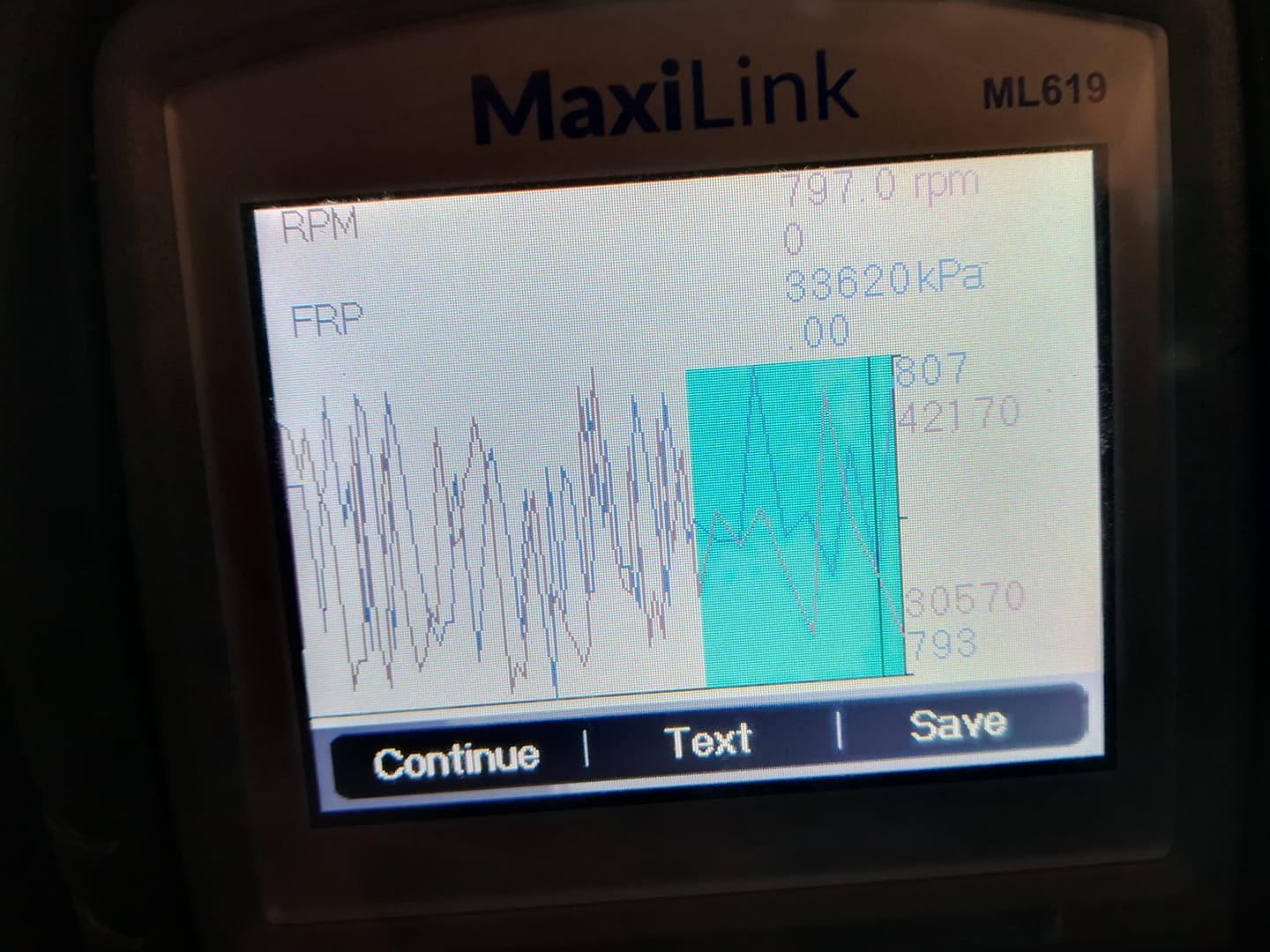I drive a Toyota Corolla with a 1AD-FTV engine. This car has become progressively harder to start over the years. Even at 10°C it might take two tries. It still starts without too much trouble, if you ignore the glowplug light (which goes off almost immediately), count to 10 slowly, then floor the accelerator and start. At -2°C it takes a good 20 minutes of repeated trying before it fires. Once the car is warm there are no issues at all.
I checked the glow plugs and they are all fine.
The other issue that sometimes crop up, which also hints towards a sticky SCV, is a slight hesitation (a flat spot) when accelerating sharply. This is intermittent.
What I've done so far is looked at the fuel rail pressure. Apparently the Denso system uses PWM to control the SCV and this should not fluctuate too much. So my question is, is the picture below reason for concern? It shows FRP fluctuating between 30Mpa and 42Mpa at idle. I don't have enough experience to know if this is normal.

